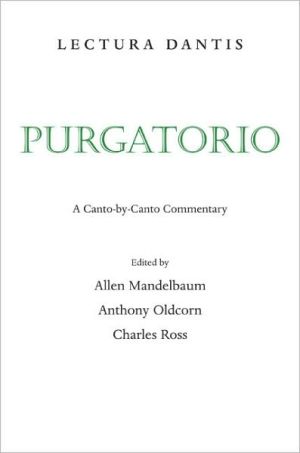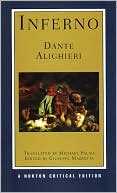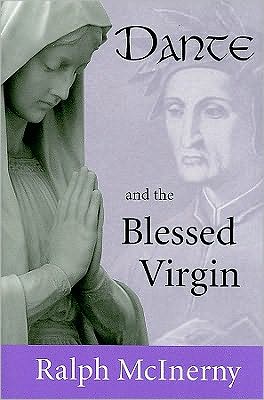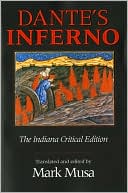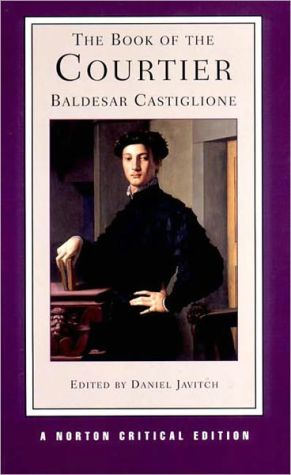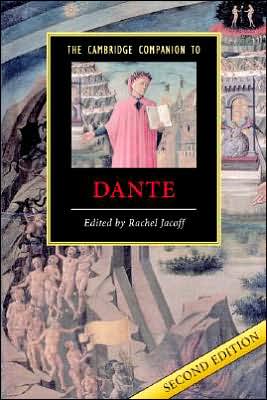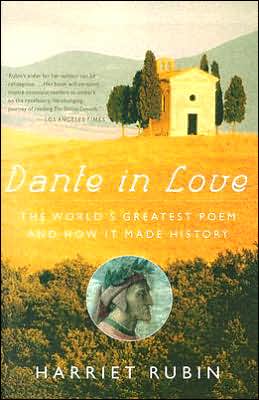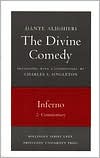Lectura Dantis: Purgatorio
This new critical volume, the second to appear in the three-volume Lectura Dantis, contains expert, focused commentary on the Purgatorio by thirty-three international scholars, each of whom presents to the nonspecialist reader one of the cantos of the transitional middle cantica of Dante's unique Christian epic. The cast of characters is as colorful as before, although this time most of them are headed for salvation. The canto-by-canto commentary allows each contributor his or her individual...
Search in google:
This new critical volume, the second to appear in the three-volume Lectura Dantis, contains expert, focused commentary on the Purgatorio by thirty-three international scholars, each of whom presents to the nonspecialist reader one of the cantos of the transitional middle cantica of Dante's unique Christian epic. The cast of characters is as colorful as before, although this time most of them are headed for salvation. The canto-by-canto commentary allows each contributor his or her individual voice and results in a deeper, richer awareness of Dante's timeless aspirations and achievements.
Lecture Dantis: Purgatorio \ \ University of California Press \ Copyright © 2008 The Regents of the University of California\ All right reserved.\ ISBN: 978-0-520-25056-7 \ \ \ \ \ Chapter One \ Ritual and Story \ EZIO RAIMONDI\ Translated by Charles Ross\ The Purgatorio opens with a solemn exordium, rich in anticipation and tension, that develops in three stages (1-12). First we are given the graceful but exultant image, dear to the mannerist tradition, of the "waters" and the "little vessel" that will "course" even as it "lifts her sail." Next, the first-person narrator dramatically ("and what I sing") offers the firm, clear definition of the theme. Finally, there is an invocation to the Muses recalling, like some mysterious legend, a famous episode in Ovid's Metamorphoses.\ One understands that this exordium is rhetorical, and that the principal voice is that of the poet who stands outside the story. But whoever listens closely will not miss that it anticipates the action of the canto by calling into account the persona, or protagonist, of the whole poem before he is named. And this perception of the narrative voice occurs, one notices, not so much because of the passion of the introductory tercets that glances, like a state of mind, at the Dante who has emerged from Hell, but because-with those multiple suggestive registers that make Dante's symbolism so genial and inventive-the discourse of the poem runs on two planes, one rhetorical and the other, one might say, existential. The "sea so cruel" that has been left behind is not only the sea of "harsh and scrannel rhymes," the "sea" of poetry that will be mentioned later in the Paradiso, but also the "dangerous waters" of Hell (Inf. I, 24) and what Dante in the Convivio calls the "ocean of our life" that every Christian must traverse to reach his final haven. It is also the same sea that the Hebrews crossed from Egypt-a symbolic sea that gets transformed into "better waters" because, by a mystery of faith, it prefigures the idea of baptism and, at the same time, the victory of Christ over death.\ Only these allusions can explain the profound resonance of a line like "may this poem rise again from Hell's dead realm" (12), in which the contrast between death and resurrection surges above the rhetorical figures (among other things, we must not forget that, according to Dante, it is Easter Sunday) to remind man of the story of his sin and his redemption and thereby to touch on what it means to return to God, the fundamental theme of the Purgatorio. Even the reference to the competition between Calliope and the Pierides, which many critics have seen as only a learned excursus in the text, acquires a new brilliance, if we regard it as an image of a liturgical contest and recall that in Ovid, Calliope chooses as her subject the rape of Proserpina and her return to Ceres from the "forest" of "perpetual spring," a myth of lost innocence and renewed fertility. In one of those shrewd choices so frequent in the Comedy, Dante finds Christian rifts of gold in a classical tale just as, at the beginning of the Paradiso, he will resort to the myth of Glaucus and insinuate, among the lower registers of his prologue, the theme and image of the distant terrestrial Paradise. And there, not by chance, Matilda will appear as a pilgrim, like a new, supreme Proserpina.\ The First Inkling of Joy\ There is no doubt that when, in Canto XIII, the narrative begins and the figure of Dante the pilgrim takes over from Dante the poet, we already understand the spiritual dimension of the Purgatorio. It is a dialectic of death and rebirth, of sterility and blossoming, whose extended rhythm regulates the timing of the cosmos. The first sensation one has, after entering this world reborn into hope, is that of light and of the high heavens, of precious transparencies, "the gentle hue of oriental sapphire." To the eyes of medieval readers, accustomed to the allusive language of the lapidaries, the qualities associated with sapphires were liberty and purity, as Marbodo, for example, explains in his Liber lapidum. But what the gemologists present as abstract archetypes, Dante places into a lively narrative situation at the very moment when the pilgrim lifts his gaze to the serene skies and rediscovers the "joy" of nature and the world of things, after the "air of death" in Hell (16-17). The delight to which the soul returns is not just the joy of a man facing the light of a new day, but also the first inkling of a longer-lasting joy, which will become entirely clear later, at the top of the mountain, when Matilda will suggest, citing the psalm Delectasti, that her smile emanates from her knowledge of a divine presence and the joy of contemplating the works of the Most High.\ In other words, the world of Purgatory assumes the character of a liturgical situation, and the adventure of the pilgrim takes place against a backdrop of mysterious correspondences, which interpret the history of humankind in the light of Christ's example and give it an order-just as occurs in the liturgy, following the hours of a day that symbolize the interconnectedness of life, a harmonious collocation of deeds, memories, and rituals. Even the apparition of Venus (19) is tied to a liturgical passage, in that it involves the star Lucifer, which appears in so many Christian hymns as an image of dawn's victory over night. Naturally, however, in the morning time of the Purgatorio, the theme is reprised and amplified in a descriptive-epic mode following the pattern of the Artes poeticae. Venus is the unnamed object of the periphrasis "the lovely planet that is patroness / of love." To tie this prologue to that of the Inferno, it is necessary to give a sign of the season, Pisces. But Dante does not lose the emotive value of the liturgical Lucifer, which is that of expectant grace. A series of thematic words (19-21) enriches his trembling sense of that salvation represented by the sun: the word "lovely" suggests the idea of a distant but hopeful God. "Eastern" suggests the sacred place of all rituals. "All" the heavens are "glad," and the sign of the Fish is accompanied by a "veiling," as in an infant's dream.\ Only now, after having set the scene, does the pilgrim say "I" and take on the role of the subject, of the actor who begins (and not without some indirect references to a catechism) a cycle of initiatory purifications. The first action he completes is to circle around, always looking up:\ Then I turned to the right, setting my mind upon the other pole, and saw four stars not seen before except by the first people. (22-24)\ The point of the sentence is to fix attention on those four stars that were seen only by the "first people," to signal, immediately after, the happiness that seems to him to radiate through the skies of Purgatory and then to turn back, finally, to a sad lament for the earth, where men must live, always deprived of such a vision.\ For Dante, as poet, thought almost always precedes sensation, thereby conditioning his affective reaction. The critic who wants to retain emotion as well as meaning must therefore accept the rules of the allegorical art and establish the meaning of those four stars, going beyond the generic lament that humankind is fallen. He must try to grasp the economy of the scene in which Dante apostrophizes, "o northern hemisphere ... you are a widower!" (26-27). The poem's organization depends on the interpretive level and not on the act that requires interpretation. Ideas structure the narrative; they are its thematic elements. From Enrico Proto's essay "Nuove ricerche sul Catone dantesco," which appeared in the Giornale storico della letteratura italiana 49 (1912), we know that these four stars are symbols of the cardinal virtues: prudence, justice, courage, and temperance, all of which informed men in the terrestrial Paradise before the first sin. But it is Charles Singleton, in his Journey to Beatrice (1958), who showed that since the four cardinal virtues were lost after the Fall, they may not be reacquired, and redeemed, except by individual effort. They are no longer natural, to Dante's disappointment. For Dante, all humanity is in a state of corruption, of permanent loss. It is written in the history of humankind that no one may return to the terrestrial Paradise with the same innocence and rightness that God gave, in the person of Adam, to human beings. Therefore, the widowed northern hemisphere stands as an admonishment, prefiguring the end of the cantica, which says that even those who are purified may not return to the uncorrupted state of the "first people." The serene sky, the smile of Venus, the advancing rays of the sun, confer on the landscape of Purgatory-as in the liturgical hymns to morning-a suspended awe, a lightness of innocence and infancy. Yet tension remains. One remembers the night and the cruel seas that accompany the expectation of light, creating an overarching rhythm of penitence and renewed purity.\ A Solitary Patriarch\ Certainly a sense of calm mystery suffuses the air. One may note that this mystery takes shape in front of us when, for an instant, the story stops as the pilgrim turns. And it follows him, at a deliberate pace, when Cato emerges from who knows where. Yet to say he emerges is not quite correct. In reality, it is Dante the pilgrim who takes his eyes off the four stars and then sees, beside him, the figure of the "patriarch" (31). The word is unusual, and the adjective "solitary" (solo) is cast into relief, in the Italian, by the rhyme. This figure of venerable isolation is the first of the great, suggestive images in the Purgatorio. His gravity draws Dante's astonished attention: "His aspect worthy of such reverence / that even son to father owes no more" (32-33).\ Dante's Convivio mentions the reverence owed to a father. But this reverence takes other courses. In the first place, the atmosphere of this moment will dominate the entire canto. In the second, it gives an expansive sense of Dante's personality as a figure in the poem. Finally, in terms of the immediate story, it creates a frame around a new sense of solemnity in Cato-also "worthy of such reverence" is the sacred sign of the eagle (Par. VI, 34-35). We are saying nothing new in noticing that the iconography of Cato derives for the most part from Lucan's Pharsalia. But if the long beard, the white skin, and the divided tresses falling on his breast recall the Roman epic (34-36), the Comedy also modifies the portrait, substituting for the grays of the original-in which the hair is horrid, unkempt, and filthy-a physiognomy that is severe but luminous. The fact is that Cato, framed by the light of the four stars, joins the traits of the Roman hero to those of a biblical patriarch. Here I am thinking not only of the usual contamination of correlative forms that comes from Dante's knowledge of languages but also of a transfiguration that invests the figure with a more profound value.\ Centuries ago the commentator Buti compared Cato to the patriarchs of the Old Testament. But what secret significance in Cato's life accounts for his election in Dante's world and for the dignity he attains in the Purgatory as, so to speak, a lay priest? Cato was a Stoic associated with liberty. Therefore, he has a symbolic relation to freedom from sin. Nonetheless, since he is a pagan, he will not be saved, making him a suitable guardian of Purgatory. It is undeniable that Cato relates not only to Dante as pilgrim but also to Dante as a writer and to his culture. The problem, of course, is that Cato was a suicide. And the answer seems to be that Dante judges him according to Cato's own moral values, those of the Romans, which differ from the ethics of Christians. Cato therefore shines with the "light" of the four cardinal virtues and receives the grace of implicit faith. He is a man who died for the benefit of human society and in a time of discord and ruin, affirming before the world, by his own sacrifice, the supreme law of liberty-not only civil but metaphysical. In his Monarchy (2.5), Dante refers to the sacrifice of Cato, the holy victim of the Decii. In the Pharsalia, Cato declares that his blood will "redeem" the Roman people and "absolve" them. For Dante, the Cato of the Pharsalia is therefore a man of destiny. As he says in the Convivio, Cato is, of all men, most fit to signify God, just as Old Testament figures foreshadow and prophetically anticipate Christ's life in the New Testament. Cato no longer plays the role of enemy of Caesar and the Empire (the Convivio also leaves this out) but becomes, as a providential figure, through his sacrifice, a shadow that foretells, within the limits of his imperfect action, the true liberation that is Christ. In this sense, it seems legitimate to refer to Cato as a patriarch. But there is more. If we pass from a consideration of Dante's culture to the poetic situation in the poem, where allusions and resonances gradually accumulate, Cato may be one of those figures, otherwise not well defined, who escaped from Limbo when Christ descended there to liberate the patriarchs and make them blessed. Like the patriarchs, but in a halo of glory that preserves the memory of Roman grandeur, he incarnates in the living and unrepeatable substance of his persona the idea of that reawakening from shadows, the victory over the realm of shades, that attended the historically unique resurrection of Christ and, through it, the rebirth of every human being. The first example of the process, naturally, is Dante himself, who leaves the dead air of Hell and returns, in the dawn of grace, to the "pure" skies of Purgatory. And so the theme of resurrection that we saw in the exordium expands within the story, a rich echo of a great event, lending unity to the episodes, situations, and movements of the canto.\ Two Worlds Converse\ We may now reduce the dialogue between Cato and Virgil, which occupies half the canto, to a common colloquy between two psychological types, two souls whose condition must be explored, even as they are reflected by an ingenious and rather unsuitable realism. In truth, even if it is Dante's achievement to have introduced these two individual and historical personalities into his ritual setting and to have made them dramatic and human, their conversation cannot be understood outside a scheme of ceremonial liturgy. Cato is the first to speak, even as he is surrounded by a prodigious "light" from the four "holy" flames. He asks the questions, like one who has been surprised and seeks information, but also like one who wants to provoke someone into taking a position that, at bottom, is an abjuration or renunciation. His allusion to an "escape" from the shadows, even as he begins to speak ("Who are you-who, against the hidden river, /were able to escape the eternal prison?" 40-41), recalls the great ritual of the Exodus.\ There follows a series of acts that marks the dynamic center of the canto. Virgil expresses himself with faith and firmness, from narration to peroration, restating some of the conversational formulas that applied to Beatrice in the first canto of the Inferno. His tenacity appears in "by way of words and hands and other signs" (50) and extends to the zeugma of "he made my knees and brow show reverence" (51). He releases information, gradually introducing Cato to Dante: "I do not come from my / own self. There was a lady sent from Heaven.... This man had yet to see his final evening; ... I showed him all the people of perdition" (52-64). He unveils his thoughts, in a culminating moment, in a promise of eternity and beatitude:\ You know it-who in Utica found death for freedom was not bitter, where you left the garb that will be bright on the great day. (73-75)\ Then he once more assumes a tone of prayer, re-creating by means of the unlooked-for name of Marcia the sunset memory of old affections. Cato speaks some words about her, but with the tenderness of one who leaves behind him a former communal existence.\ Dante's genius was to create a tone that also sets up the clarity of the rest of the dialogue. Those who are convinced that the poet weighed and calculated this transition like to scrutinize the stylistic web created by the words dedicated to Marcia, which combine biblical phrasing ("Marcia so pleased my eyes" [86] recalls placuit oculis meis of Judges 14:3) with the structure of antithesis (mentre ch'i' fu' di là ... Or che di là) that Dante found characteristic of Marcia in Lucan's Pharsalia, which he also imitated in the Convivio (IV 28, 16-17). Certainly what Cato now affirms is the opposite of what Lucan's Marcia says, because he speaks from across an unbridgeable divide, while in the Convivio, as in the Latin poem, the aging woman renews her desire for the passion of love. But even reversed, the cadences of Marcia's ancient prayer that shift into Cato's austere discourse retain a discreet, though hidden, serenity, a memory of old affections that does not contradict the role of judge and patriarch assigned by Dante to the Roman hero. In fact, Cato loses himself in Virgil's overly polite "flattery" (93) that with a slightly allegorical undertone admonishes him that it is useless to compare Marcia to the "lady come from Heaven" (91). Something changes in the tone of Cato's words, something fundamental in his attitude, which becomes no longer that of an inquisitor, following the logic of a ritual, but that of a judge, a teacher, a master of what one might call a cult.\ (Continues...)\ \ \ \ \ Excerpted from Lecture Dantis: Purgatorio Copyright © 2008 by The Regents of the University of California. Excerpted by permission.\ All rights reserved. No part of this excerpt may be reproduced or reprinted without permission in writing from the publisher.\ Excerpts are provided by Dial-A-Book Inc. solely for the personal use of visitors to this web site. \ \
Ritual and Story Ezio Raimondi 1The New Song and the Old Robert Hollander 11The Sheepfold of the Excommunicates Robin Kirkpatrick 21The Lute Maker Enzo Quaglio 39The Keys to Purgatory Aldo Scaglione 47Abject Italy Maria Picchio Simonelli 56Sordello and the Catalog of Princes Maurizio Perugi 65In the Valley of the Rulers Ricardo J. Quinones 73The Ritual Keys Charles Ross 85The Art of God Hermann Gemlin 95Gone with the Wind Anthony Oldcorn 103Eyes Down Janos Kelemen 119Among the Envious Albert Wingell 129The Rhetoric of Envy Massimo Verdicchio 141Virtual Reality Arielle Saiber 151A World of Darkness and Disorder John Scott 167On Revenge Jo Ann Cavallo 178Love, Free Will, and Sloth Marilyn Migiel 191Vectors of Human Love Sara Sturm-Maddox 200Hugh Capet and theAvarice of Kings Vincent Moleta 210Greeting Statius Janet Levarie Smarr 222Virgil and Statius Discourse Christopher Kleinhenz 236Reading Literary and Ethical Choices Rinaldina Russell 252Of Poetry and Politics Lino Pertile 262Statius's Marvelous Connection of Things Ronald Martinez 277The Fires of Lust and Poetry Prue Shaw 288At the Threshold of Freedom Glauco Cambon 303Watching Matilda Victoria Kirkham 311Dante's Processional Vision Peter Armour 329At the Summit of Purgatory Rachel Jacoff 341Dante's Repentance Emilio Pasquini 353The Parallel Histories H. Wayne Storey 360Beatrice's Prophecy, Matilda's Name, and the Pilgrim's Renewal Dino S. Cervigni 378Contributors 391Index 399
